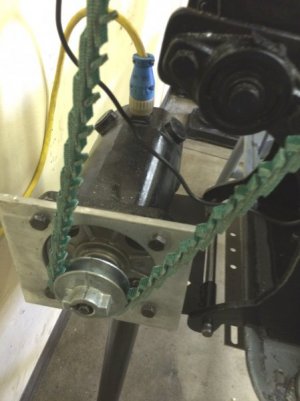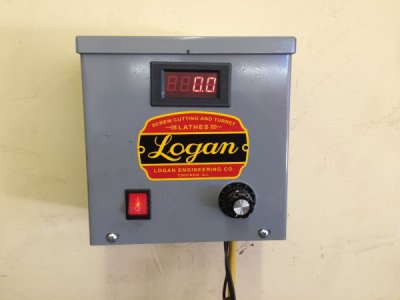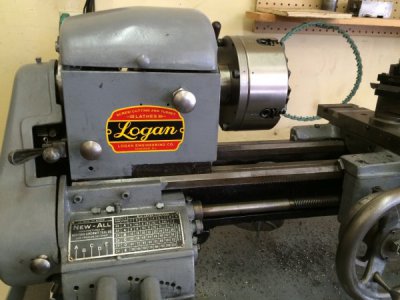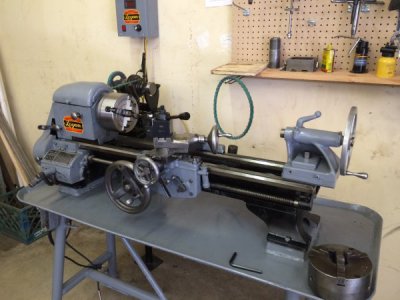- Joined
- Jan 23, 2015
- Messages
- 60
I think I may be as far as I want to go for now. I want to make some chips!
1. Took out the Treadmill 'beer can' motor and control. Just not enough grunt unless running at really high (5,900) rpm. Sold the pair for $110 locally
2. Purchased a 1 hp servo motor (2000rpm) and matching control. Built a new enclosure and mounted controls and tach. Much improved torque and quieter.
3. Purchased an inexpensive 4-jaw Chinese-made chuck and modified the one-size-fits-all 6 in. mounting plate to fit including boring and inside threading to my 2 x 8 spindle. Got some help from more experienced guys in evening machineshop class doing that. Darn, with 4-jaw it takes a long time to indicate a workpiece down to .001 or less.
4. As a treat to lathe and myself I got a Logan Lathe logo from the Internet, copied a couple of them onto vinyl and put some 3M adhesive on the back and put them on the control enclosure and lathe head stock. (see photos). Since its a Frankenlathe but still mostly Logan I figured it would be OK. Not the metal plate the originals had but the same logo.
Future work to do: figure out why it takes so long for longitudinal feed to start up once half-nut is engaged and figure out a fex.
Jerry




1. Took out the Treadmill 'beer can' motor and control. Just not enough grunt unless running at really high (5,900) rpm. Sold the pair for $110 locally
2. Purchased a 1 hp servo motor (2000rpm) and matching control. Built a new enclosure and mounted controls and tach. Much improved torque and quieter.
3. Purchased an inexpensive 4-jaw Chinese-made chuck and modified the one-size-fits-all 6 in. mounting plate to fit including boring and inside threading to my 2 x 8 spindle. Got some help from more experienced guys in evening machineshop class doing that. Darn, with 4-jaw it takes a long time to indicate a workpiece down to .001 or less.
4. As a treat to lathe and myself I got a Logan Lathe logo from the Internet, copied a couple of them onto vinyl and put some 3M adhesive on the back and put them on the control enclosure and lathe head stock. (see photos). Since its a Frankenlathe but still mostly Logan I figured it would be OK. Not the metal plate the originals had but the same logo.
Future work to do: figure out why it takes so long for longitudinal feed to start up once half-nut is engaged and figure out a fex.
Jerry






